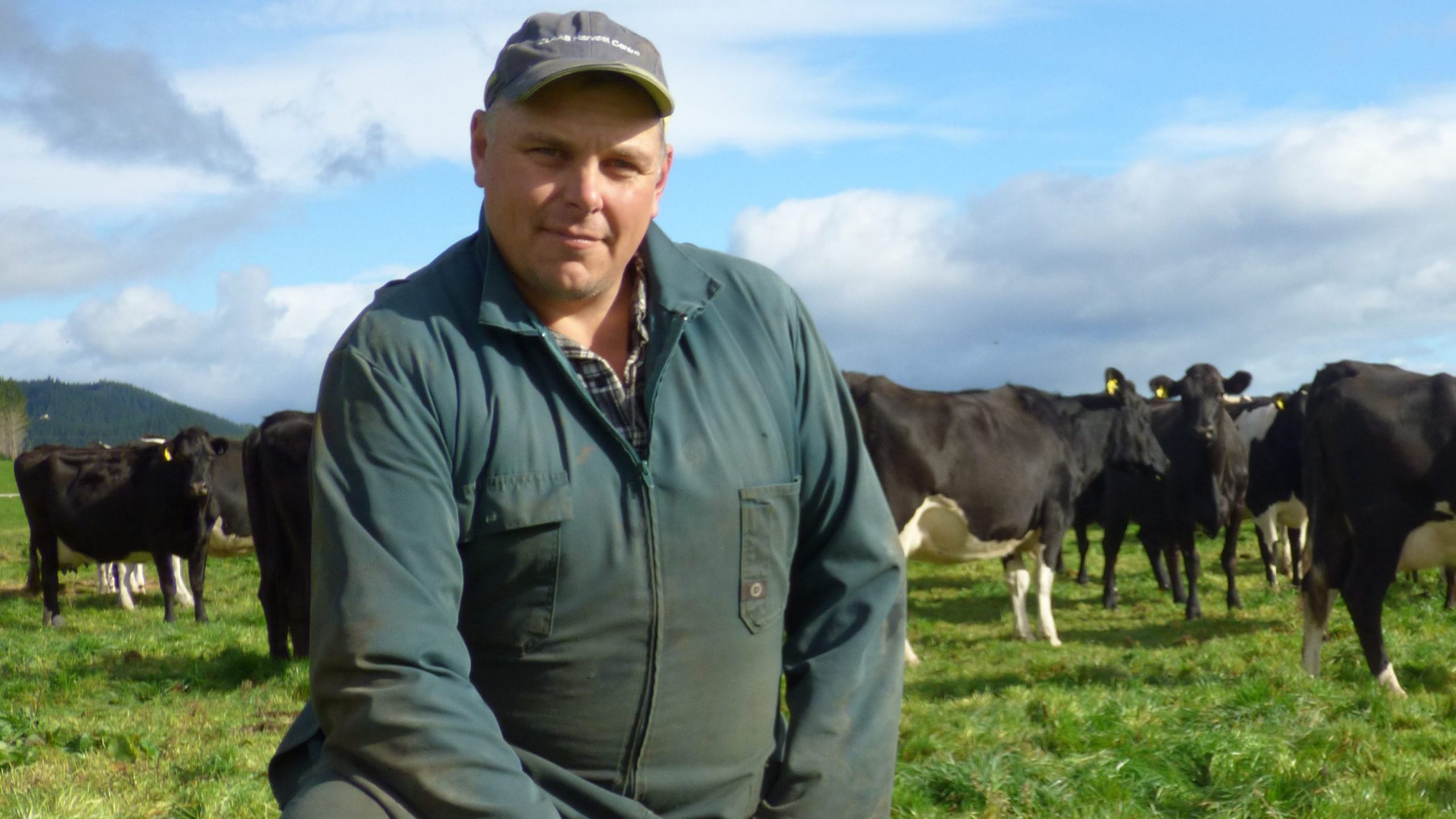Testimonial – Mike Tillemans, South Waikato

For most farmers who decide to include Sollus products into their herd’s feed regime, the toughest part about the move is getting their heads around reducing the amount of grass they are including in their herds’ diet during calving.
In a country where dairy farmers are bought up to make the most of growing and using low-cost ryegrass and clover, it can seem counter intuitive when grass intake is recommended to be reduced, and supplements increased, often at a time of year when grass supply is good.
Mike Tillemans from South Waikato would be the first to admit he was like most farmers in that respect when he first kicked off with Tranzsol and Lactisol in his herd’s diet.
Mike owns two farms and share milks on one other, comprising 440, 270 and 350 cows between Tokoroa and Atiamuri. He started looking at his mineral options before taking on Sollus after having on going issues around down cows at calving time.
Two of the farms are on a System 3 regime, with about 1t of supplement per cow a year, while the 270 Jersey cow farm is 1.5t a cow a year.
“The Tranzsol is a bit dearer, but it could be mixed with their feed and had more minerals within it that what I had been using.”
The first shift in thinking and approach for Mike came when he had to work up a springer mob transition diet to feed for 14 days prior to calving.
Grass intake was limited to no more than 5kg of dry matter a head a day, with soy hull and PKE with added Tranzsol mixed in making up another 5kg, topping up with about 2kg of hay.
Shifting the springers onto that diet two weeks before calving, combined with Tranzsol in the feed mix was a new approach.
“And it was tough at first, because you know grass is always the cheapest, and you have your winter grass in front of you but have to ration it right down.”
But he found once the cows had calved and were in the milking mob they hit the ground running, with far less milk fever and less condition loss once they started lactating.
“From there we would switch to Lactisol right through the entire season.”
The second season he tuned up the feed ratios and resisted the temptation to boost the grass quantity in the transition mob.
“And there was a bit of work there to convince my staff to think the same way, to lower the amount of grass they were getting, but we got the mix right.”
That year the results were more prominent.
“In our two Friesian herds we would only have had 5-8 down cows over the entire calving, and in the Jersey herd which had been up at about 20% down cows, we only got four to five cows. We managed that by tweaking the mag chloride levels up, adding it to the Tranzsol.”
While the two- week transition requires some planning and care around feed allocation, for Mike it’s the most valuable two weeks of the season because of how it sets his herds up to have a successful lactation.
“That includes a big improvement in submission and conception rates. We would have had our empty rate decline across the three farms from 12-17% to 7-11%.
“We have also managed to tighten up our calving pattern thanks to the improved submission rate, moving from 11-12 weeks to 9-10 weeks.
“It is things like that you don’t fully appreciate changing for the better until you look back over a couple of years and really notice the improvement.”
Production has picked up across all the properties, with the Friesian herds producing their body weight, or about 500kg a head in milk solids, and the productive Jerseys outstripping their bodyweight, averaging about 450kg a head a year now.
The production gains since adjusting diet and moving to Sollus products has been significant, alongside having happier, healthier cows.
He and the staff also appreciate not having to spend time with the unpopular job of spreading magnesium around paddocks with a quad bike at a busy time of year.
The 350-cow farm Mike bought two years ago had been all grass inputs and had managed 116,000kg milk solids. Moving to Lactisol, Tranzsol and the supplements kicked that up to 186,000kg milk solids in one season.
“It pretty much paid for the feed system in the first year.”
Similarly, the 440-cow farm has been lifted from 150,000kg MS to 220,000kg MS.
While the Sollus products have been a key part of the farms’ success, Mike says the support he gets from the Sollus team has been equally valuable.
“Every month we will have a farm meeting with the Sollus rep and the feed company, just reviewing how things are going, and if we need to tweak anything.”
Heading into a new season, Mike has no intentions to change the system he has adopted, knowing he and his staff appreciate the far fewer down cow problems, and knowing production is well up without compromising cow health.